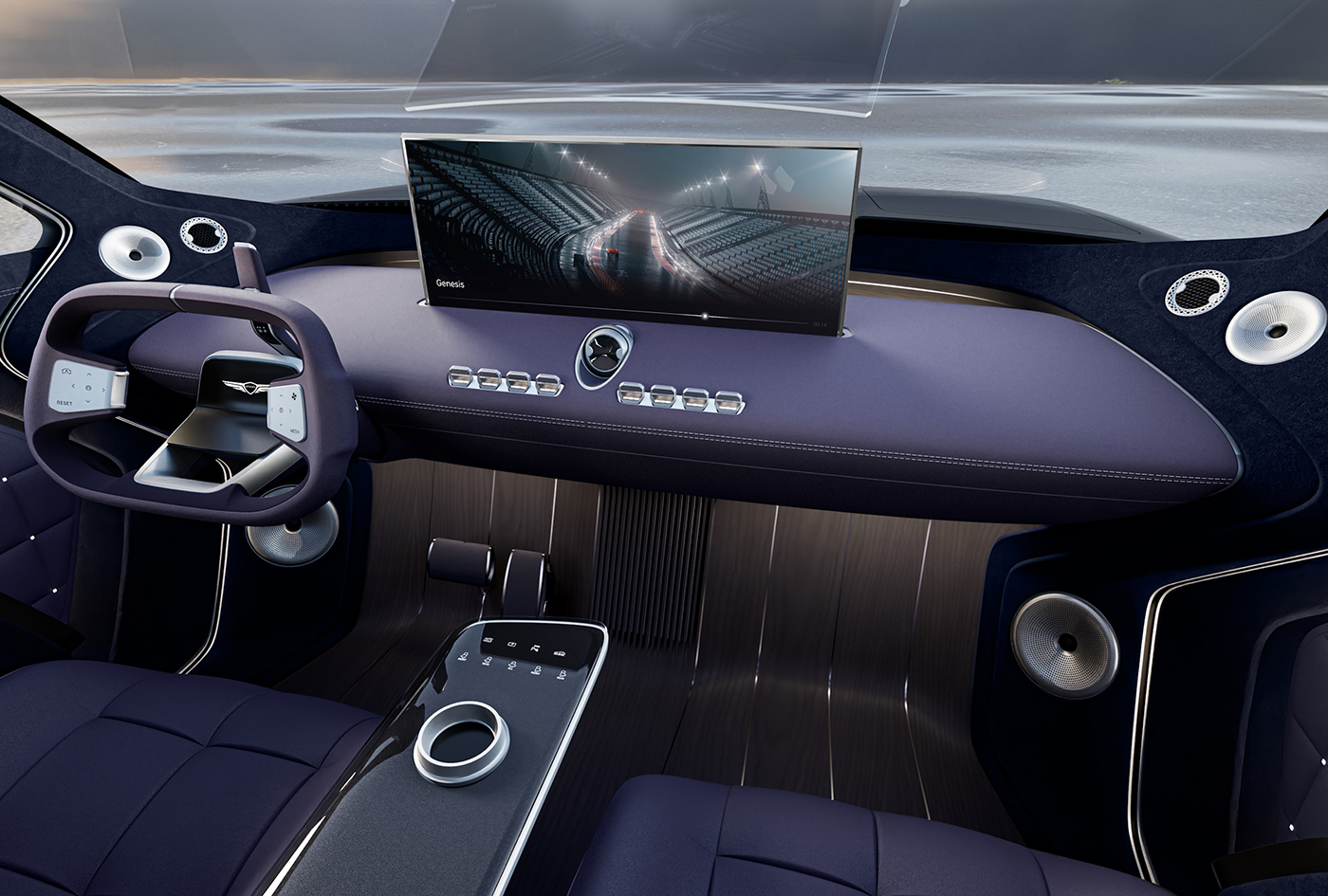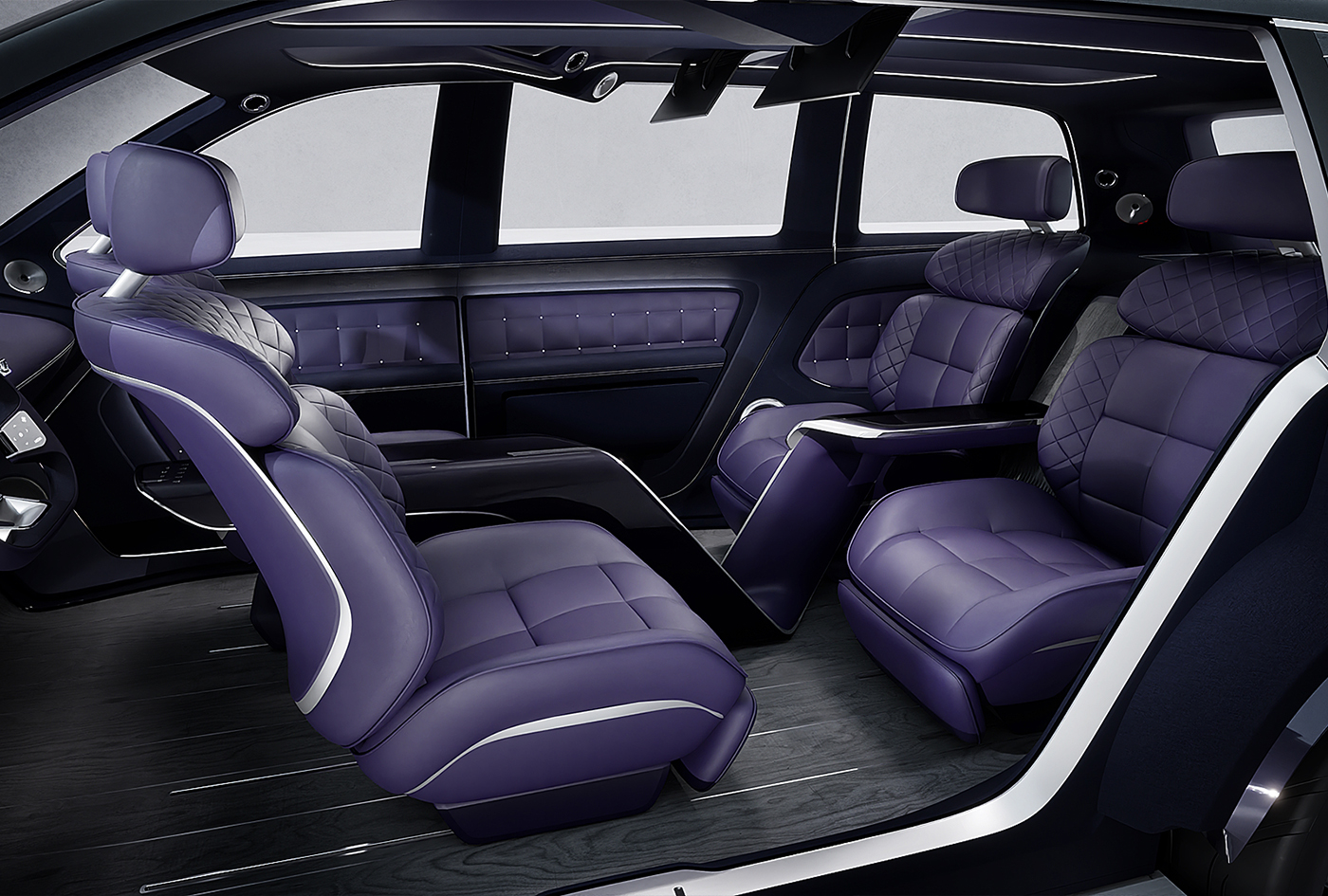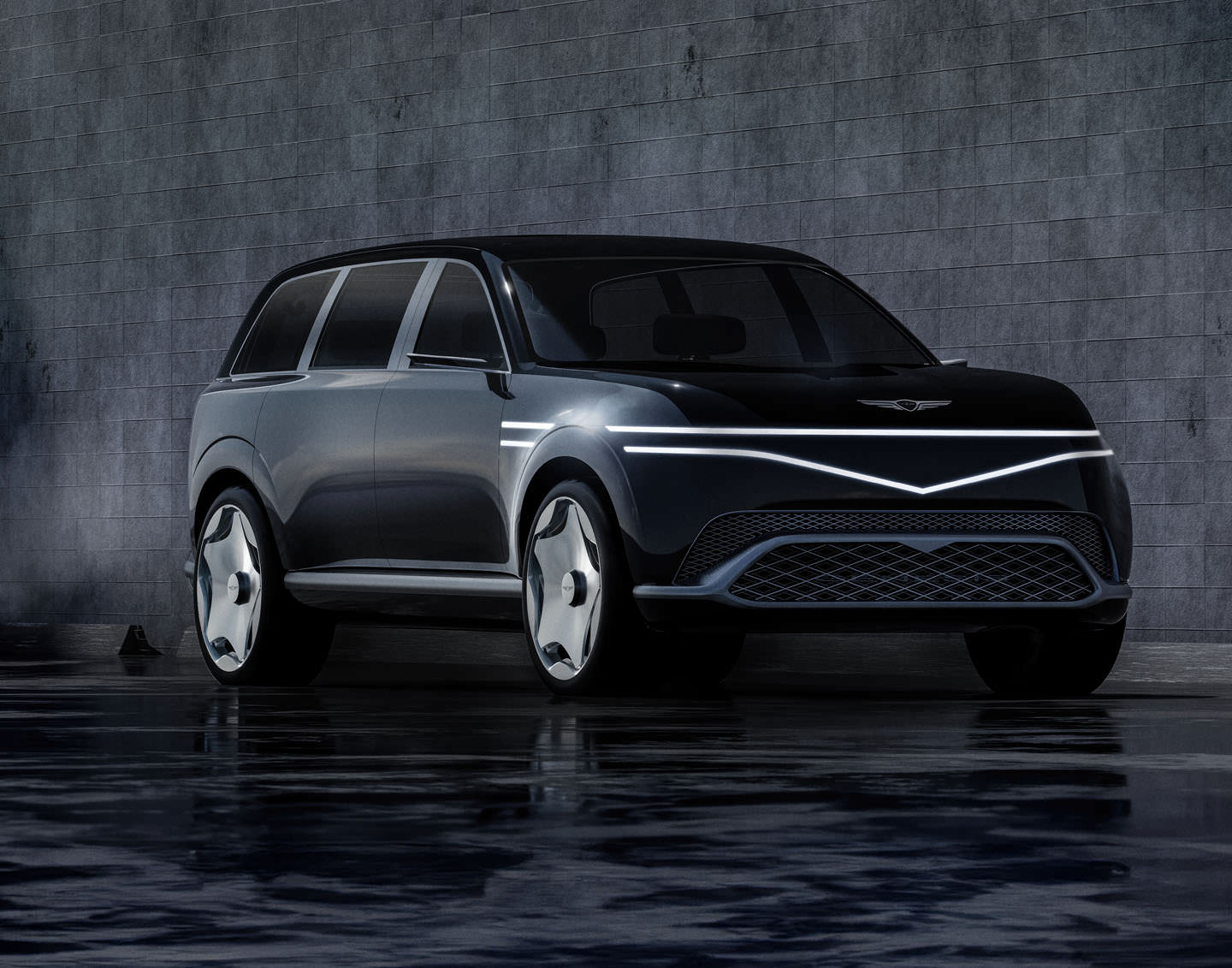Squid Game. Gangnam Style. K-pop. Korean popular culture is a mass export for the country, straight from Seoul and onto the world stage. When the boom hit China in the late 1990s, journalists dubbed it Hallyu, Korean Wave. Today, Hallyu is a worldwide tsunami: music, food, drama, art. And now, cars.
Revealed at this year’s New York International Auto Show, the Genesis Neolun concept car hints at a new flagship EV for the brand. Its polished surfaces are a tribute to Korea’s delicate porcelain moon jars, and as with the moon itself, you can feel the gravitational pull of the Genesis, a symbol of the rising tide of the Korean auto industry.
As a standalone brand separate from parent company Hyundai, Genesis is not even 10 years old. Launched as a single executive sedan sold largely as value for money, it now offers a complete portfolio of luxury crossovers and EVs, and it is launching top-of-the-range performance models for its entire fleet.
But even more impressive is the speed with which Kia and Hyundai have evolved from peddlers of generic bargains to cutting-edge style and performance. Load the current Santa Fe, a family-oriented crossover, into a short-range time machine, and a bystander might think they were looking at something from Range Rover. That’s a Hyundai?

Wind the clock back further, and the relentless progress swims into focus. Canada’s Korean automotive story begins with the humble and disposable Pony, a car Hyundai spent several decades trying to forget. Only more recently has this little hatchback started to get some respect as a pioneer. Designed by Giorgetto Giugiaro, the original 1974 Pony concept was a masterpiece of edgy design, similar to a DeLorean DMC-12 or a Lotus Esprit. When the refreshed production five-door arrived in Canada 10 years later, it was a far more homely affair. The Pony’s rear-wheel-drive architecture was comparable to a mid-1970s Japanese hatchback like a Mazda GLC but was old technology next to a contemporary Honda Civic.
Sales exploded based purely on price, but then followed a bust as the cars were consumed by Canadian winters. The next decades were spent repairing the reputation of Korean car-making, which began to improve with the general public as the likes of the Santa Fe and Kia Sorento proved reliable and unfussy to own.
However, the showrooms at both Kia and Hyundai lacked flair. Subaru even ran fake ads for a sedan called the Mediocrity, using a disguised first-generation Kia Optima to position Subaru’s all-wheel-drive Legacy as a cut above plainer fare. The plan backfired somewhat when Kia’s new Optima sedan emerged with sharp styling and a new signature “tiger” nose thanks to Peter Schreyer, a German designer lured over from Volkswagen and Audi.

Hyundai also brought over Albert Biermann from BMW’s performance-oriented M division. He was put in charge of Hyundai’s new N division, named for both the Nürburgring circuit and the Namyang district, home to Hyundai’s R&D facilities.
The idea of a performance Hyundai would flummox anyone who ever nursed a 70-horsepower Pony up to a highway gallop. But the current lineup is shockingly good, from the hooligan antics of the Kona N to the dialled-in track capability of the Elantra N and, most recently the 641-horsepower Ioniq 5 N EV, which is not the only battery-electric arrow in Hyundai’s quiver. The Ioniq 6 sedan is quick, efficient, and remarkably quiet and comfortable as a tourer.

Meanwhile, over at Kia, design is even more forward-looking. The EV6 was launched on the same platform as the Ioniq and features a cutting-edge look that is pure Blade Runner. It’s since been joined by the EV9, a three-row battery-electric crossover with broad-shouldered and futuristic presence, with a platform that offers the closest hint so far as to what a production version of the Neolun might ride on.
While each brand operates with its own identity, together they show the Korean automotive industry at the top of its game. Its designers can take chances, and the production models look like they belong in the mid-2020s. Hyundai’s performance-oriented models are good enough to rival anything from Honda or Toyota. Genesis has successfully taken the fight to BMW and Mercedes. Even Kia’s affordable entry-level compact sedan, the just-revealed K4, is a striking standout.

This automotive hallyu is just starting to crest, with Korea’s automakers mature enough to offer a wide variety of products yet still nimble enough to push the envelope. There is even a final, redemptive arc for the humble Pony. The original coupe concept from 1974 is long lost, but its promise has been resurrected in one of the coolest cars of the past half-decade.
Hyundai calls it the N Vision 74, and it is a functioning, high-performance realization of Giugiaro’s design. Built around a hydrogen fuel cell with twin electric drive motors, it’s intended to provide supercar performance for the track. The rumour is that Hyundai plans to actually put the car into limited production as an 800-horsepower model.
It’s the prototype that represents the state of the Korean automotive industry. It is built on the spine of a Kia Stinger, the rear-wheel-drive performance sedan that broke that brand out of its economy car mould. The project was originally intended to develop a car for Genesis.
Contrasted with the refined Neolun, the sharp-edged N Vision 74 shows the breadth of what Korea is capable of and keeps the automotive hallyu rising.
Read more from our Summer 2024 issue.









